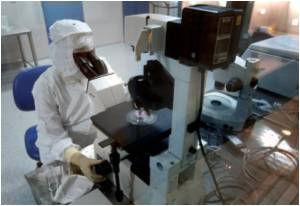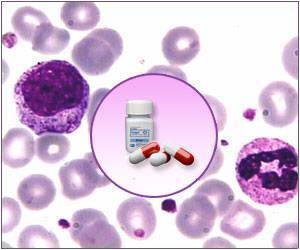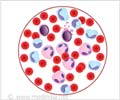A group of heterogeneous diseases with considerable diversity in terms of genetic abnormalities is acute myeloid leukemia (AML).

Breakthrough study validates Sox4 as potential therapeutic target
In this breakthrough study, the researchers discovered, for the first time, a molecular target for CEBPA mutations by demonstrating that targeting Sox4 effectively perturbs the major leukemogenic phenotypes in human patient samples of mutated CEBPA AML. These findings were first published in the leading scientific journal Cancer Cell on 11 November 2013.
Although CEBPA mutations have been studied for decades, the precise oncogenic pathway and the role of their downstream targets are still poorly understood. This is the first study that identified a molecular target downstream of CEBPA mutations. By identifying the failure to suppress oncogene Sox4 expression as the underlying mechanism of CEBPA mutant-transformed leukemia stem cells (LSCs), the study highlights Sox4 as a potential therapeutic target for a subtype of AML. The discovery provides a direct route for the treatment of such leukemia and is a big step forward as there are currently limited therapeutic options for this subtype of AML.
Moving forward, the researchers intend to continue investigating the downstream signaling components of Sox4 during normal hematopoiesis and leukemogenesis. Based on the findings of Sox4 as a crucial node in mutated CEBPA-driven leukemogenesis, the team will focus on identifying its downstream signaling components and explore whether inhibition of these pathways, using pharmaceutical drugs, can effectively eradiate LSCs. They will also look into the development of novel therapeutic drugs for cancer.
New research identifies histone deacetylase inhibitors as potential candidates in treatment of AML
Advertisement
The research team examined the blood samples of more than 500 patients who were newly diagnosed with AML for this study. They found that a group of genes, known as the CEBPA signature, was not properly expressed in 20 per cent of the blood samples. Their findings also revealed that the CEBPA signature was responsible for blocking the growth of granulocytes, impeding their ability to mature into healthy blood cells.
Advertisement
As HDAC inhibitors have complex mechanisms of action, the research team intends to further examine how they behave at the molecular level in order to establish ways to promote the growth of healthy blood cells.
Said Professor Daniel Tenen, "Up to now, therapeutic options for AML are very limited. By understanding oncogenic pathways and the signatures which respond to specific enzyme inhibitors, we can build up our knowledge and understanding towards the development of more efficient drugs. We hope to apply similar approaches to identify new therapeutic avenues for other types of AML."
Source-Eurekalert














